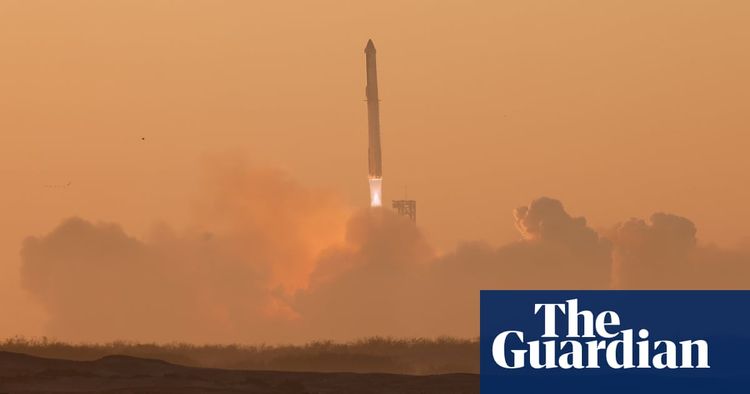SpaceX’s Starship reaches space for first time but explodes moments later

Over the weekend, SpaceX's unmanned space vehicle known as Starship accomplished its first ever voyage into outer space. The ultimate goal of Starship is to transport human beings to the moon as well as to other celestial realms. Nevertheless, shortly after the initial success, the mission was believed to have ended in a malfunction.
Starship underwent its second trial run, as its first endeavor to make it to space previously concluded with a blast in the earlier months of this year.
The space vehicle with two stages took off from the company owned by Elon Musk at the Starbase launching zone located near Boca Chica in Texas, to the east of Brownsville. The journey was intended to last up to 90 minutes without any crew members on board.
If everything goes according to plan, the rocket will eventually touch down in the Pacific Ocean close to Hawaii. The corporation aspires to see the rocket embark on an orbit around the planet, which may require approximately 90 minutes.
Around two and a half minutes into the journey, the spacecraft split into two stages. SpaceX quickly informed that it was unable to detect any signal from the second part and declared it as "missing".
According to the organization, the self-destruction function of the rocket was possibly activated once it failed to receive a signal.
Compared to the initial test launch in April that ended in both stages exploding four minutes into flight, SpaceX's second flight has shown notable advancements. The first stage of the spacecraft, also referred to as "Super Heavy" due to its 33 engines, did not perform as expected during the first test, leading to the unfortunate explosion of both stages.
On this occasion, Super Heavy's thirty-three engines managed to lift the rocket system Starship and itself into space without any issues. As intended, Starship disconnected from Super Heavy without any problems. However, due to an automatic shutdown system, the rocket unfortunately exploded.
According to SpaceX engineer John Insprucker, during a company broadcast, the current belief is that the automated flight termination system on the second stage was activated very late in the burn while the spacecraft was heading over the Gulf of Mexico.
Insprucker didn't mention what could have triggered the shut-off mechanism.
On X, the social media site which is also possessed by Musk and previously recognized as Twitter, SpaceX validated that it encountered a blast. The corporation labels the occurrence as "a swift, unscheduled disintegration".
The company stated that the current test's value lies in the knowledge we can gain from it. Enhancing the reliability of Starship is vital as SpaceX endeavors to expand life beyond a single planet.
Well done to the whole SpaceX crew on a thrilling second combined flight assessment of Starship!
The Starship recently achieved lift-off thanks to the 33 Raptor engines that fueled up the Super Heavy Booster. Moreover, the vessel successfully passed through a stage separation process.
The rocket was temporarily halted by the Federal Aviation Administration for a safety and environmental inspection, but was allowed to launch this week. The firm faced a backlash following its initial explosion, as it dispersed a significant amount of debris throughout Texas.
The business has secured a $4 billion agreement with NASA. NASA's expectation is that the partnership will produce the initial landing on the moon in over 50 years. Musk, the company's owner, wants the rockets to be used for something more significant. The long-term objective is to send humans to Mars by creating reusable methods of transportation.
Musk has also suggested the possibility of utilizing a rocket for business flights, perhaps by providing a one-hour trip from London to Tokyo.
Musk has consistently emphasized the significance of conducting tests, even if it leads to explosions, in order to enhance the quality of the organization's spacecraft. A representative from Nasa hinted that the company will have to increase the number of launches to a minimum of "high teens" before the spacecraft becomes qualified for the moon landing mission.





























































